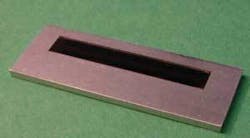In the process of studying laser-matter interactions, researchers at the University of Rochester (Rochester, NY) have found evidence that the underlying physics may not be thoroughly understood. For instance, the commonly accepted idea that femtosecond-laser ablation leaves negligible heat in the ablated material appears to be inaccurate, at least for metals. The upside of this discovery, however, is that certain materials produced through femtosecond-laser-pulse irradiation may find important industrial uses.
Femtosecond-laser ablation has found a wide range of applications that include high-precision materials micromachining, thin-film deposition, generation of ultrashort x-ray pulses, and synthesis of nanoparticles. The commonly held view of femtosecond-laser ablation is that energy deposited by ultrashort laser pulses does not have enough time to move into the bulk sample. One of the reasons for this misperception may be that a lot of ablation is performed in dielectric materials as opposed to metals, which have higher conductivity.
Even in looking at metals, no one had directly measured energy absorbed following femtosecond-laser ablation because it is very hard to perform such a measurement, according to Chunlei Guo, assistant professor of optics at the University of Rochester. Normally, what is measured is the incident and reflected energy; the absorbed energy is then calculated as the difference of the two. “With ablation, you damage the surface; it will be very difficult to measure the absorbed energy this way, because all the diffuse reflectance cannot be easily collected,” Guo said. So his team measured absorbed energy directly using a calorimetric technique that has been previously used in studying interactions between nanosecond lasers and matter.1, 2
The researchers used an amplified Ti:sapphire laser system generating 60 fs pulses with energies of about 1.5 mJ/pulse at a 1 kHz repetition rate and a central wavelength at 800 nm to illuminate sample metals. Calorimetric measurements of temperature change in the bulk sample enabled determination of energy deposition in the material, which was divided by the incident energy to provide an accurate absorbance ratio.
Using these methods to test different metals at different levels of energy deposition, the researchers found gradually increasing levels of absorbance. A mechanically polished undamaged metal surface typically has about 10% absorbance. A femtosecond-laser-treated metal surface first develops nanoscale roughness in the form of nanobranches and spherical nanoparticles; as pulse energy increases, microscale structures can arise in the form of micropores, circular microgrooves, central microchannels, and regular periodic ripples. A further increase of pulse energy can also lead to displacement and redeposition of ablated materials. Finally, these femtosecond-laser-induced structures can increase absorbance to virtually 100%.
“When you create nanoscale structures, you tremendously increase the surface area, which would be also useful in chemistry,” Guo said. The additional surface area can be used to make fuel cells more efficient, for example, by enabling addition of much more catalyst to a reaction, because the catalyst could be spread over much larger areas.
Relating to the interaction of high-intensity lasers with matter in general, Guo said, “there are a lot of things we still don’t understand. These are very violent processes in which, for example, thousands of photons may knock on a single atom at the same time. So the processes become highly nonlinear. We are also looking at the responses of individual atoms and molecules of interest in high fields. This study, by reducing the complexity from many particles in materials to an individual atom or molecule, helps us to understand laser-matter interactions at a very fundamental level.”
REFERENCE
1. C. Guo, SPIE Proc. 6118(08) 1 (2006).
2. A. Y. Vorobyev and C. Guo, App. Phys. Lett. 86, 011916 (2005).
